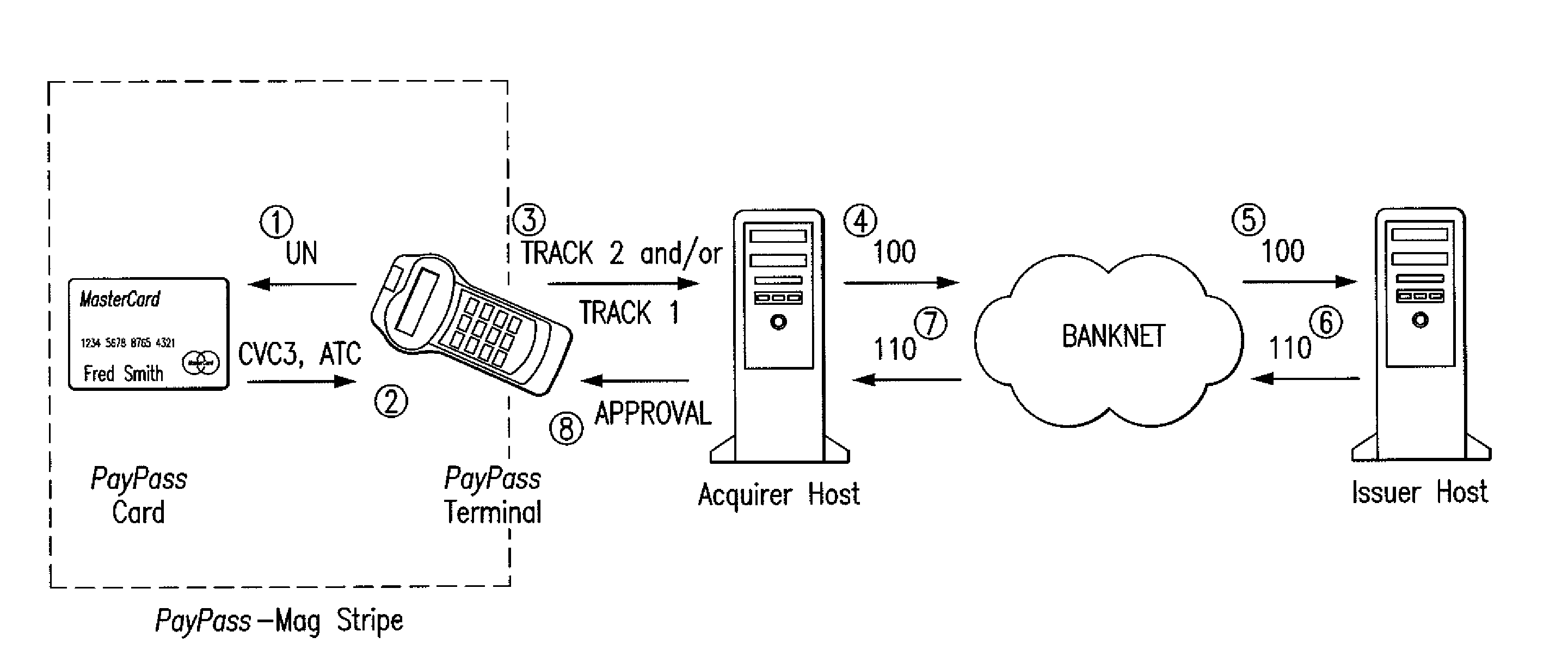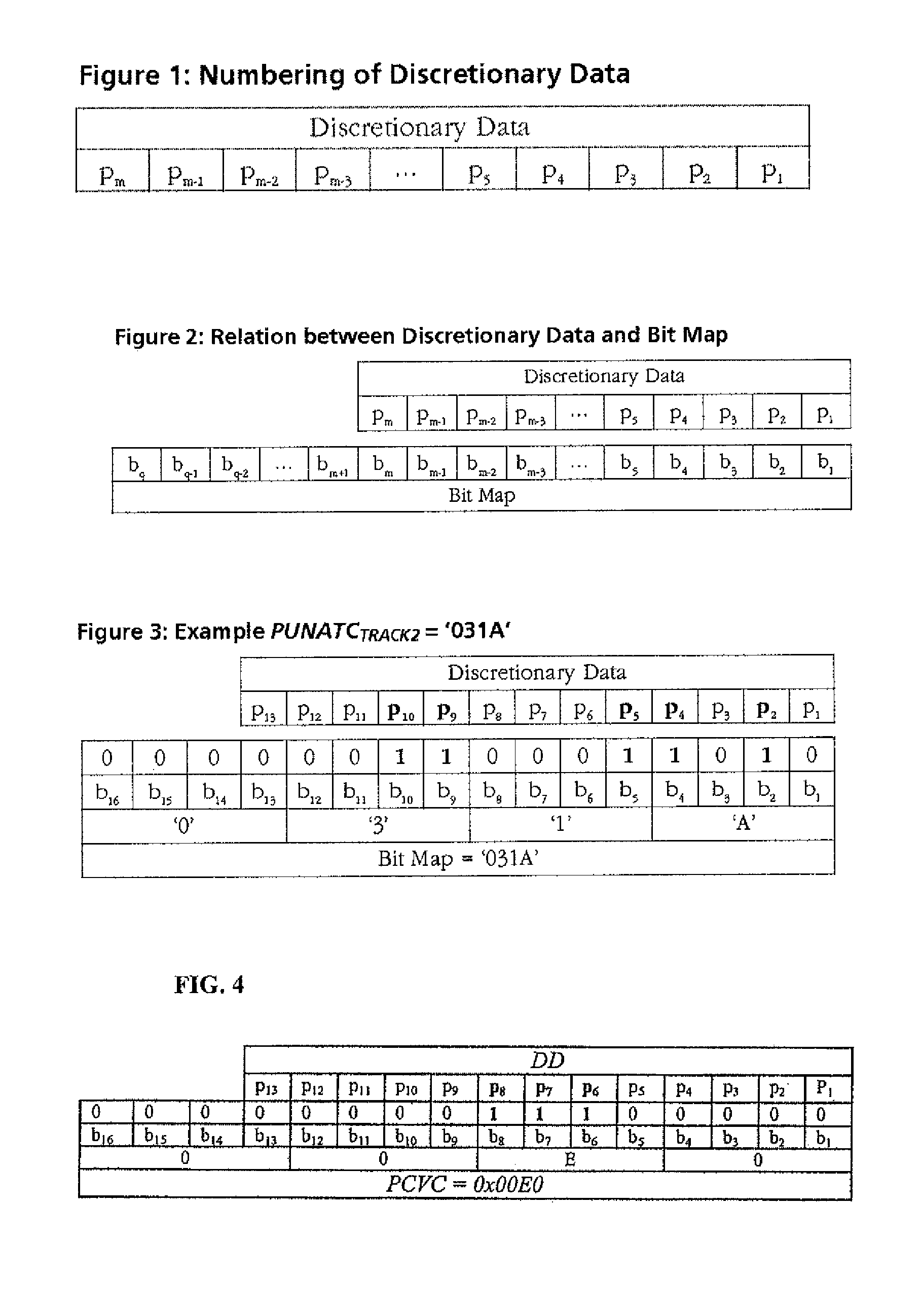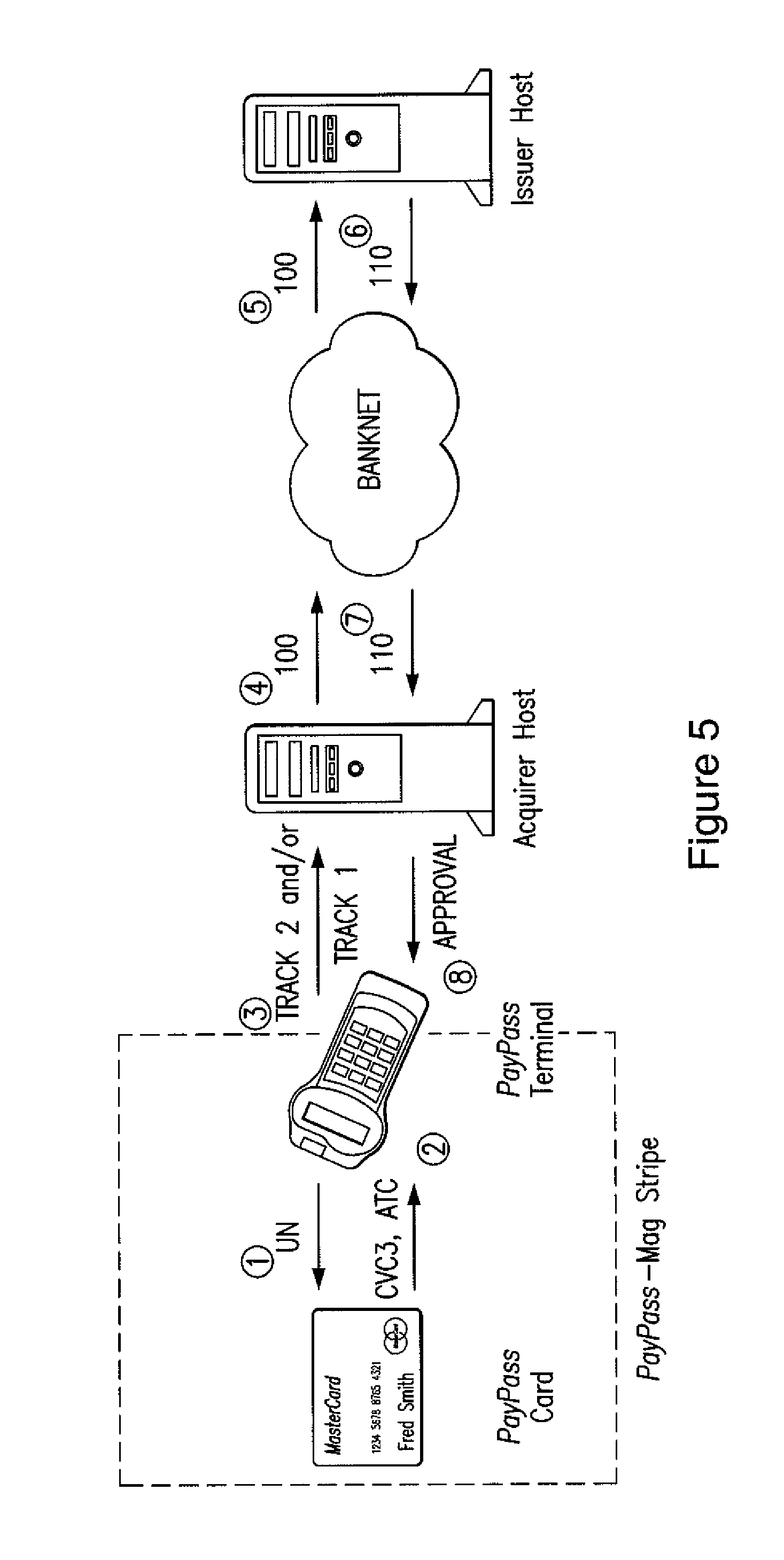Method and system using a bitmap for passing contactless payment card transaction variables in standardized data formats
a contactless payment card and variable technology, applied in the field of methods and systems using a bitmap to pass contactless payment card transaction variables in standardized data formats, can solve problems such as inconvenient use of discretionary data fields by vendors and issuers, and difficulty in standardizing the use of space for storing proximity card function related data,
- Summary
- Abstract
- Description
- Claims
- Application Information
AI Technical Summary
Problems solved by technology
Method used
Image
Examples
Embodiment Construction
[0026]The invention provides a standardization method and system for placing proximity card function data or digits in discretionary data fields used for magnetic stripe cards. The digits are stored in available space in the discretionary data fields, which has not been used by card issuers or vendors. The number of such digits and their precise locations within a discretionary data field are flexibly assigned using a bitmap. The bitmap is stored in the card's discretionary data field. The flexible manner of placing proximity card function data or digits in the card's discretionary data fields does not have any adverse effect on card functions. Card behavior is independent of vendor usage of the discretionary data fields.
[0027]For purposes of illustration the inventive data placement method is described herein with reference to the discretionary data field defined in Track 2. However, it will be understood that the inventive data placement method is readily extended to additional or...
PUM
 Login to View More
Login to View More Abstract
Description
Claims
Application Information
 Login to View More
Login to View More - R&D
- Intellectual Property
- Life Sciences
- Materials
- Tech Scout
- Unparalleled Data Quality
- Higher Quality Content
- 60% Fewer Hallucinations
Browse by: Latest US Patents, China's latest patents, Technical Efficacy Thesaurus, Application Domain, Technology Topic, Popular Technical Reports.
© 2025 PatSnap. All rights reserved.Legal|Privacy policy|Modern Slavery Act Transparency Statement|Sitemap|About US| Contact US: help@patsnap.com



